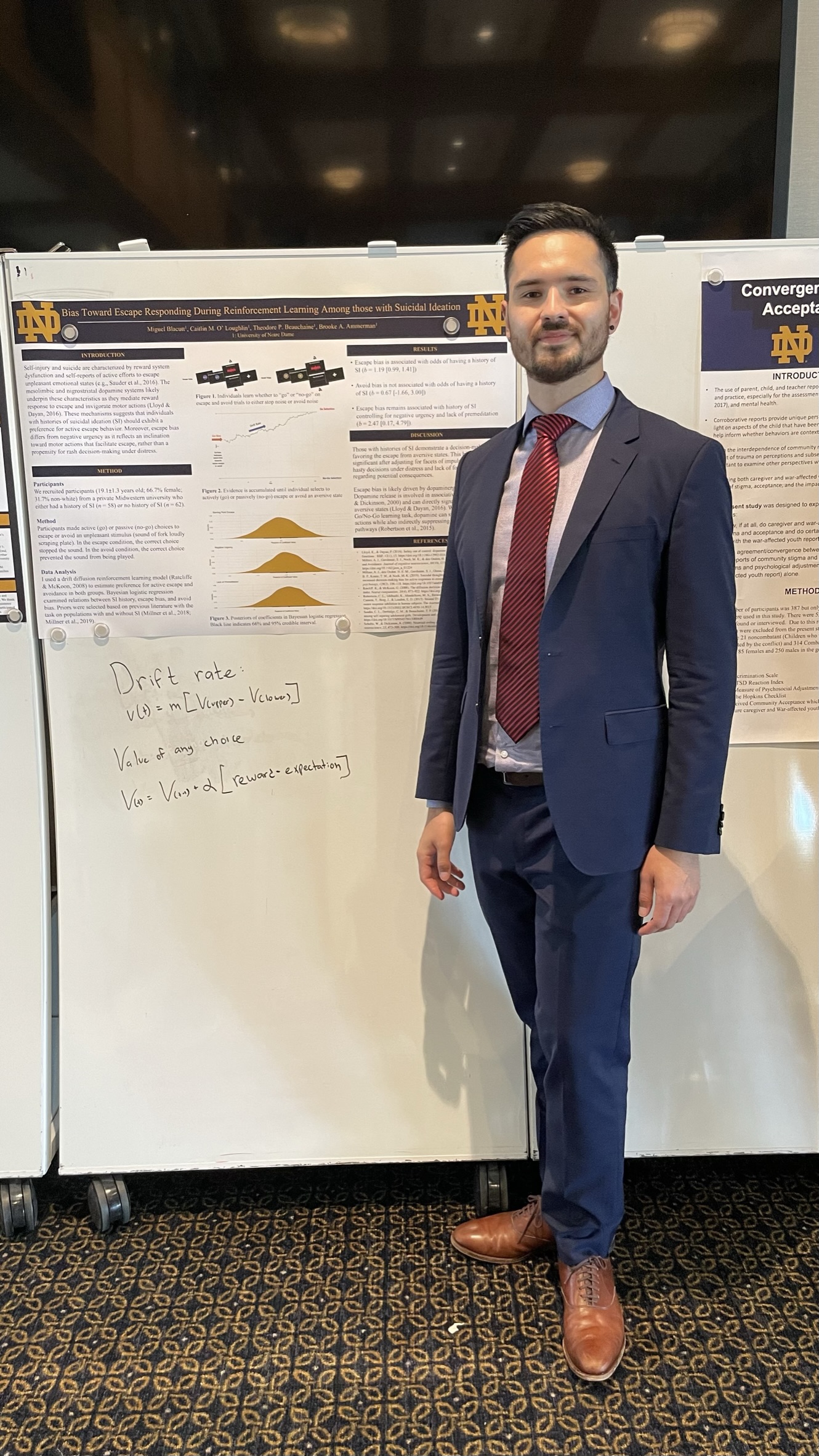Symposia
Suicide and Self-Injury
3 - (SYM 72) Integrating Active and Passive Approaches: Intensive Time Sampling in Investigating Social Media's Impact on Suicide Risk
- BA
Brooke A. Ammerman, Ph.D. (she/her/hers)
Assistant Professor
University of Notre Dame
Notre Dame, Indiana, United States 
Miguel Blacutt, Other
Doctoral Student
University of Notre Dame
South Bend, Indiana, United States- RJ
Ross Jacobucci, Ph.D.
University of Wisconsin-Madison
Madison, Wisconsin, United States - NR
Nilam Ram, Ph.D.
Professor
Stanford University
Stanford, California, United States
Speaker(s)
Co-author(s)
Social media use is far-reaching, with most Americans reporting using at least one form. Engagement is multifaceted and serves numerous purposes, often concurrently, highlighting the intricate relationship users have with digital spaces (Pew Research Center, 2023). However, existing research has yet to fully capture this complexity. Innovative methodological approaches, such as screenomics, which takes screenshots every five seconds to monitor phone usage (Ram et al., 2022), offer a promising avenue for deepening our understanding of the nuanced ways social media use influences suicide risk. Thus, the current presentation aims to detail findings regarding the social media – suicide risk relationship obtained from active (i.e., ecological momentary assessment; EMA) and passive (i.e., screenomics) intensive time sampling data.
78 participants with past-month active suicidal ideation (SI) completed 28 days of EMA (6 surveys/day) assessing self-reported social media use (i.e., 8 items; “How many times did you… share content; post your own content; browse someone else’s profile”, etc.) and momentary suicidal ideation (SI), as well as 35 days of screenshot capture via the ScreenLife Capture application (Yee et al., 2023). Approximately 100,000 screenshots were collected per person. Data collection recently concluded. We detail preliminary findings among a subset of participants; a parallel approach will be applied to the full sample.
First, we conducted Bayesian multilevel models with the 8 EMA social media items (person-centered and grand-mean centered) in predicting active SI. No significant relationships in concurrent or prospective models were found. We then explored metrics obtained from screenomics, with a focus on screenshot descriptives. We conducted two decision trees analyses with glmertree (including grand-mean centered EMA variables and screenshot descriptives). Findings highlighted the importance of passively obtained smartphone-based social media use: in concurrent and prospective models, average number of screenshots taken between midnight and 6am was the most important SI predictor.
While preliminary in nature, current findings underscore the value of passively obtained metrics of smartphone-based social media use in predicting suicide risk above and beyond self-reported metrics. Further analyses will include social media platform specific (i.e., Facebook, Instagram, etc.) investigations, having implications for targeted and personalized intervention efforts.

.png)
